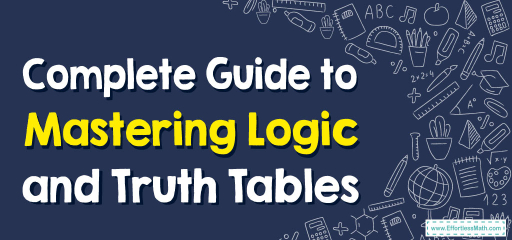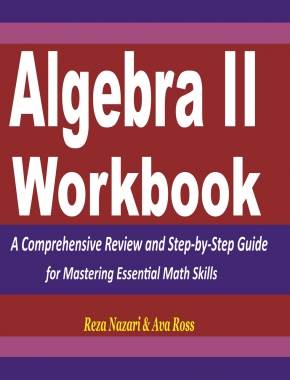Complete Guide to Mastering Logic and Truth Tables

- Conjunction (AND) denoted by \(\land\): If both \( p \) and \( q \) are true, then \( p \land q \) is true.
- Disjunction (OR) denoted by \(\lor\): If either \( p \) or \( q \) is true, then \( p \lor q \) is true.
- Negation (NOT) denoted by \(\neg\): If \( p \) is true, then \(\neg p \) is false and vice versa.
- Conditional (IF…THEN) denoted by \(\rightarrow\): “If \( p \) then \( q \)” is false only when \( p \) is true and \( q \) is false.
- Biconditional (IF AND ONLY IF) denoted by \(\leftrightarrow\): True if both \( p \) and \( q \) have the same truth value.
- List all possible combinations of truth values for the statements involved.
- Evaluate the compound statement for each combination.
Examples
| \( p \) | \( \neg p \) | \( p \lor \neg p \) |
|---|---|---|
| T | F | T |
| F | T | T |
| \( p \) | \( q \) | \( p \rightarrow q \) |
|---|---|---|
| T | T | T |
| T | F | F |
| F | T | T |
| F | F | T |
Practice Questions:
- Construct the truth table for the statement \( \neg p \land q \).
- Evaluate the truth table for the biconditional statement \( p \leftrightarrow q \).
- Determine the truth value of the statement \( (p \land q) \lor \neg p \) when \( p \) is true and \( q \) is false.
Original price was: $109.99.$54.99Current price is: $54.99.
-
Truth Table for \( \neg p \land q \) \( p \) \( q \) \( \neg p \land q \) T T F T F F F T T F F F -
Truth Table for \( p \leftrightarrow q \) \( p \) \( q \) \( p \leftrightarrow q \) T T T T F F F T F F F T - The truth value of \( (p \land q) \lor \neg p \) when \( p \) is true and \( q \) is false is True.
Original price was: $109.99.$54.99Current price is: $54.99.
Original price was: $114.99.$54.99Current price is: $54.99.
Related to This Article
More math articles
- How much Does It Cost to Retake the CBEST Test?
- 7th Grade ACT Aspire Math Practice Test Questions
- How is the ASVAB Test Scored?
- 5th Grade NYSE Math FREE Sample Practice Questions
- How to Multiply Radical Expressions? (+FREE Worksheet!)
- Top 10 8th Grade MAP Math Practice Questions
- How to Graph Solutions to Linear Inequalities?
- Space Station Canteen: A Guide How to Estimate the Amount of a Tip
- Hоw tо Choose thе Right Calculator fоr High Sсhооl
- Top 10 Free Websites for ATI TEAS 7 Math Preparation




























What people say about "Complete Guide to Mastering Logic and Truth Tables - Effortless Math: We Help Students Learn to LOVE Mathematics"?
No one replied yet.